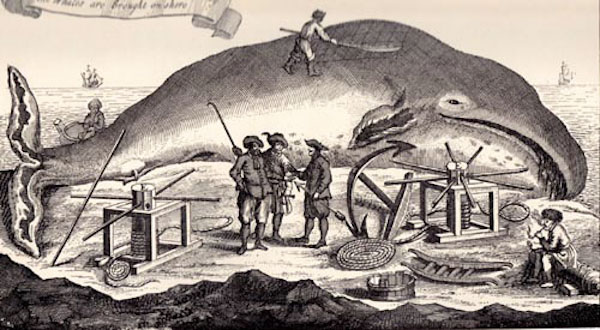The Laskan Lifestyle
The Laskans live in tight knit communities along inlets and fjords, with most of the population being engaged in farming hardy strains of barley and potatoes, and the husbandry of precious cattle, who provide warmth in the depths of winter. This is not where the majority of the average Laskan's sustenance comes from, however- there is also a significant hunting industry and, more importantly, living off the fat of the sea.
Maritime culture is the heart and soul of the Laskan people. Even before the Regression, Alaska's primary export (after petroleum) was sea food. When the Regression did occur, those who didn't leave for warmer pastures were in danger of starving- agriculture was totally marginal, and most people had neither the means nor know-how to do the kind of agriculture that would work in Laska. So, without refrigeration to ship fish south, the Laskans began just keeping fish for themselves. And crabs. And mussels. And clams. And, eventually, whales.
With practically infinite lumber, creating large ships was a trivial affair, and the longship quickly became the preferred design. Not only were boats useful for getting food- they were a must for any sort of transport. Most of Laska is nearly inaccessible over land, thanks to high mountains and omnipresent waterways, necessitating some other way to get from place to place. It is said that once, the Laskan Forefathers rode in the bellies of great metal birds from place to place. Those days were long gone, however, so most Laskans have opted for a low-tech alternative.
While eventually Laskans did figure out agriculture as new techniques spread from northeast of Ankrage, ocean-going has remained one of the culture's mainstays, and primary means of nutrition in some of the more lean areas, like the Alaskan Peninsula or Graham Island.
Whaling itself is one of the most famed of the Laskan practices, and an art that seems to have been mastered only by them of all the people of the West Coast. Californian nobility simply could not live without their whale-oil lamps and the countless implements made from bone and baleen. Of course, it's not just the Californians that benefit- the amount of food gained from even a small whale is astronomical, the oil is indispensable in the cold winter, and bone is an incredibly useful building and crafting material. It is a sign of high prestige to have a home partially made from whalebone.
Whaling has become one of Laska's greatest industry: not only can a whale feed a village for a year (some of the real monsters could feed the whole of Laska), but the baleen, whalebone and rendered fats are worth their weight in gold.
Hunting still makes up a significant portion of the Laskan economy, but much less then it used to, thanks to centuries of overhunting. The hunting of bears is rather significant, though- claws and furs can fetch a pretty penny from Cascadian merchants, especially from the dreaded Polar Bears.
Agriculture is still engaged in by almost every Laskan village. It revolves around extremely hardy potatoes, pumpkins, squashes, and barley strains. A complex and highly superstitious system of crop rotation and fertilization with detritus, wood ash and cow manure is engaged in to maximize output. Additionally, large earthworks are constructed for a variety of purposes. For one, they serve as windbreaks. For another, they create pockets of good climate that aid in the growing of crops. Because of the nature of the Laskan climate, with long periods of near constant sunshine (followed by long periods of total darkness), agriculture is surprisingly productive and crops grow surprisingly large.
A giant Laskan pumkin
Laskan agriculture is rather intensive. Because of this, it is fairly common for communities to be dominated by warlords. Each village is dominated by a warlord living in his longhouse at the center of town. Usually they have achieved this by being a good warrior, and than getting elected by the village's warriors and elders. These warlords, called Sheriffs, command their people and warriors. Generally, these warlords declare fealty to a nearby warlord, who in turn declares fealty to another, until you get to the largest Warlord in a given region, what is generally referred to as the "Borrough Sheriff", and the town in which he is based the "Borrough Seat". The Borough Sheriffs then may or may not swear fealty to a higher power- the Governor in Ankrage, the President in Joono, the City Council in Kechikan, or the Admiral in Baranoff Castle.
The Sheriffs are the basis for the long and rich tradition of raiding among the Laskans.
Historically, every now and then the Laskans would raid and fight one another, usually by boat, or even the tribes further down in coastal British Columbia. 700 years ago, a particuarly bad winter meant that most of Laska was on the edge of starvation. So, some bright-minded guy came up with a plan: unite, and go south.
Ever since, raiding has become one of the activities most associated with the Laskans by the people of the south. They are rarer then southern lore might have you think, usually occurring only when a particularly charismatic warlord can get enough Sheriffs to drop their differences for a while, or if some calamity (usually a bad winter or blight) forces them to it for survival.



